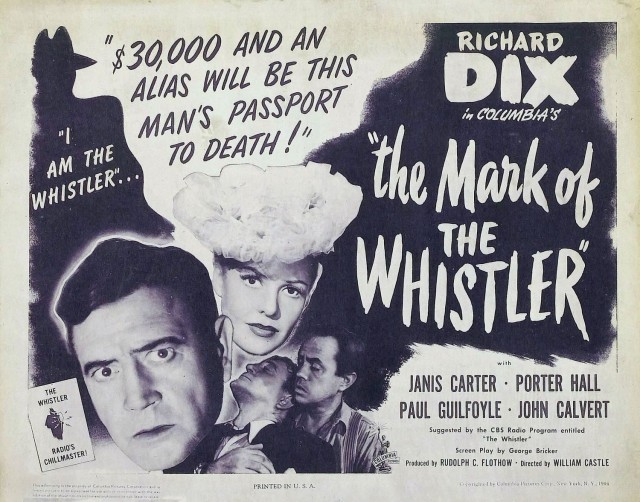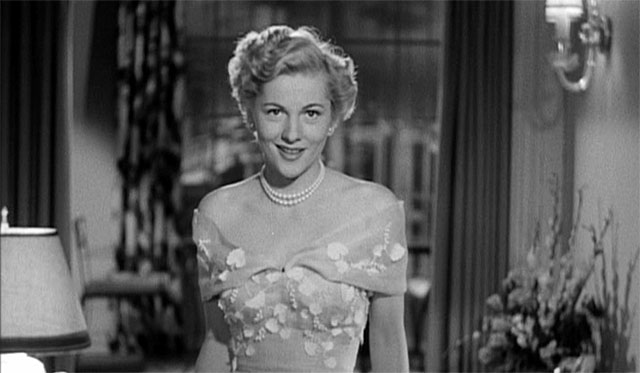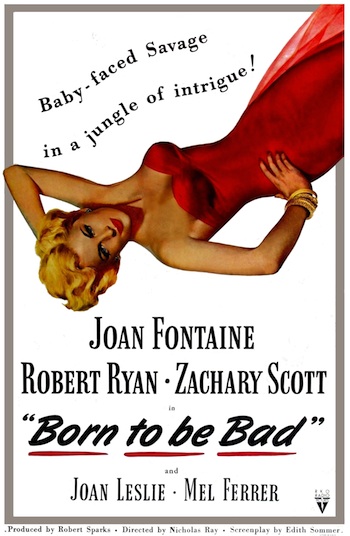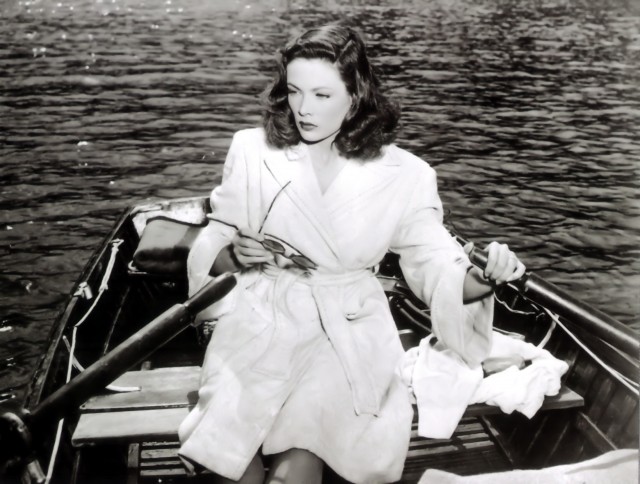For my next installment in the NOIRvember series, I would like to discuss the (mainly) William Castle directed film noir series of the 1940’s entitled The Whistler. Based on the popular radio serial that ran from 1942-1955, the film noir/crime/mystery series totaled 8 films; 7 starred veteran actor Richard Dix (who played a different character in each role):
- The Whistler – 1944
- The Mark of the Whistler – 1944
- The Power of the Whistler – 1945
- Voice of the Whistler – 1945
- Mysterious Intruder – 1946
- The Secret of the Whistler – 1946
- The Thirteenth Hour – 1947
- The Return of the Whistler – 1948

The “Whistler” we refer to is an omniscient narrator (Otto Forrest, with a voice that sound awfully similar to Vincent Price) who sets the stage for the crime story which usually involves some plot twist or wrinkle in the criminal scheme, thus leading to things not going as initially planned.
I have only seen a few of the films in the series, but I must admit I have enjoyed what I saw; granted, the enjoyment is by no means the result of watching some form of high cinematic art. With running times of approximately 60 minutes, there really isn’t enough time to do much but spin a tale where you find yourself chuckling at criminals engaging in some dubious acts that due to either oversight or just plain hubris don’t go exactly the way they intended.
Sources: Wikipedia, Turner Classic Movies (TCM)



